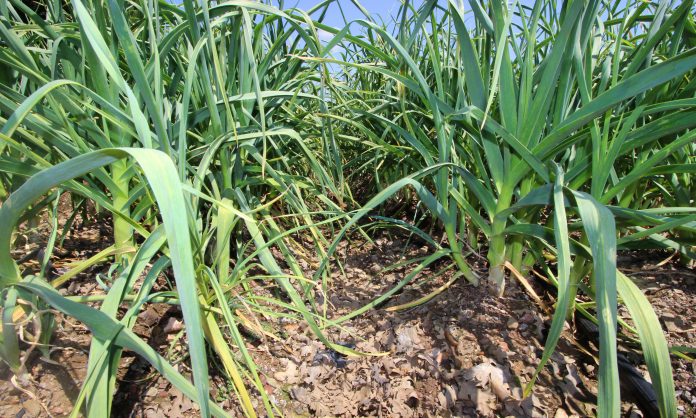Christopher Ranch in Gilroy welcomed a decision by President Donald Trump to increase tariffs to 25 percent on $200 billion worth of Chinese goods May 10.
Many U.S. farmers, especially soybean and corn producers, fear drastic consequences if China retaliates with its own tariffs on U.S. agriculture commodities in response to a 25 percent tariff on Chinese products. The new tariff went into effect after U.S. and Chinese officials failed to secure a trade deal.
In contrast, Christopher Ranch, the city’s largest private employer, is planning to ramp up production to meet what it expects to be a significantly increased demand for California-grown garlic because of the tariff, said Ken Christopher, executive vice president of Christopher Ranch.
In an interview, Christopher said he was excited by the decision. Garlic is one of the nearly 6,000 products that are included in the tariffs.
“It’s immediate relief for our industry,” he said May 10.
Since 2001, the Government Accountability Office has attributed more than $600 million in financial damages to the U.S. garlic industry from “illegal dumping” of Chinese garlic. Chinese exporters have flooded the U.S. market with cheap produce, Christopher said, and sell their products well below the cost of production.
“Many Chinese exporters are playing ‘the long game,’ and instead of competing in the free and fair market, are choosing to flood our shores at a loss to gain market share in the future,” Christopher said.
As a result, Chinese garlic cost around $25 a box, compared to roughly $60 a box for California-grown garlic, making it “almost impossible to compete,” he said.
There are now only three major garlic farms in the U.S., down from 12 in the 1990s.
With Christopher Ranch accounting for nearly half of U.S. garlic production, such activities by Chinese exporters had hit the company hard. Christopher said his family-owned private company had been mired in a nine-month sales slump earlier in 2018.
“We’ve gotten pretty battered,” he said.
Christopher testified in Washington, D.C. in August 2018 about the Chinese garlic dumping problem, and asked that the government to impose a 25 percent tariff on all inbound Chinese garlic.
President Trump enacted a 10 percent tariff on Chinese goods in mid-2018. Such a tariff, while a start to even the playing field, was not enough, Christopher said.
The tariffs were originally set to increase from 10 percent to 25 percent Jan. 1, then March 1 because no trade agreement had been reached, but the talks continued.
“We had been planning to ramp up production to meet the demand for California-grown garlic,” Christopher said. “Last weekend when we first heard about tariffs going to 25 percent, we were a little skeptical. We’ve been burned on this before.”
Christopher, who admitted that tariffs are not a long-term solution, said Christopher Ranch welcomes competition from other countries, but only those that don’t “cheat the system.”
While the tariffs are still in the early stages, consumers should expect to see a price increase in garlic exported from China. California garlic, meanwhile, will not see a price increase, according to Christopher.
“Usually the media reports that tariffs are hurting farmers, but there is more to the story,” he said. “When it comes down to economics in a trade war, there are winners and losers.”















